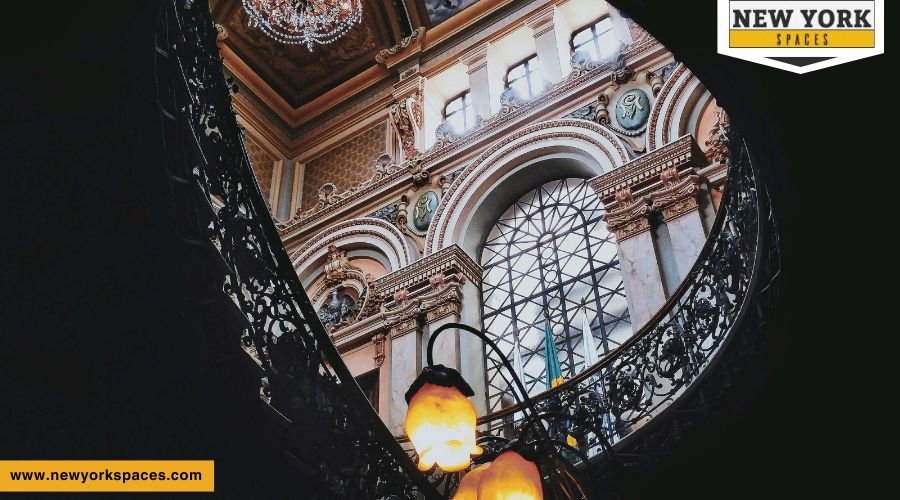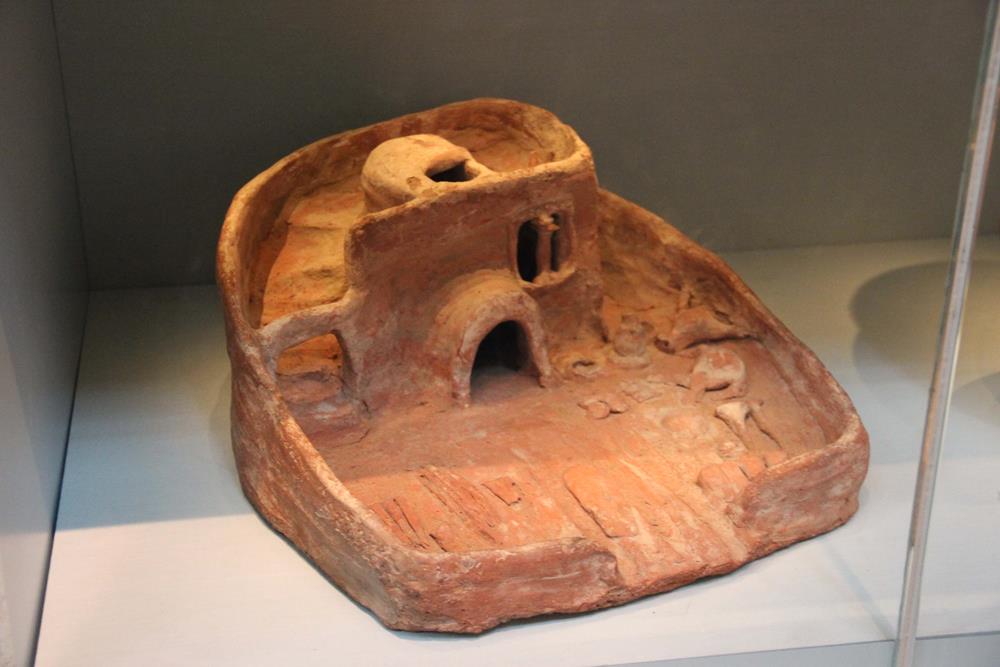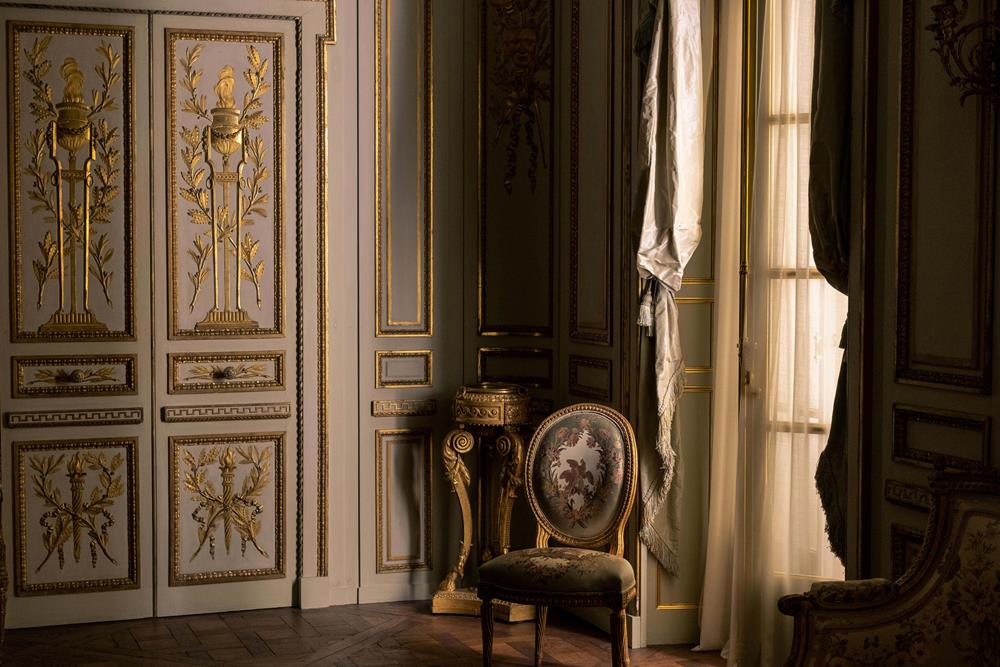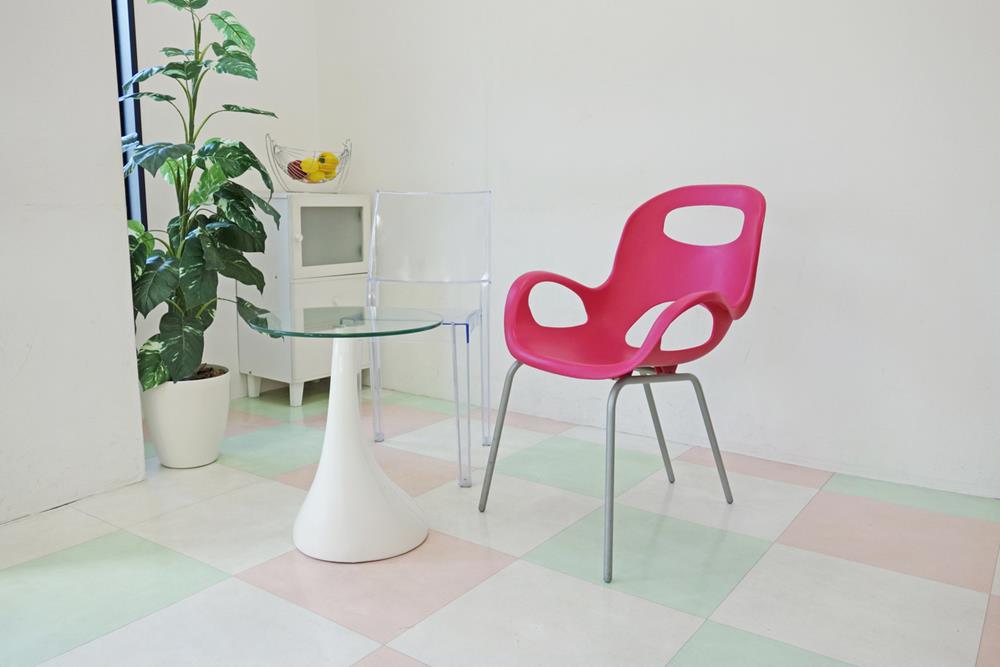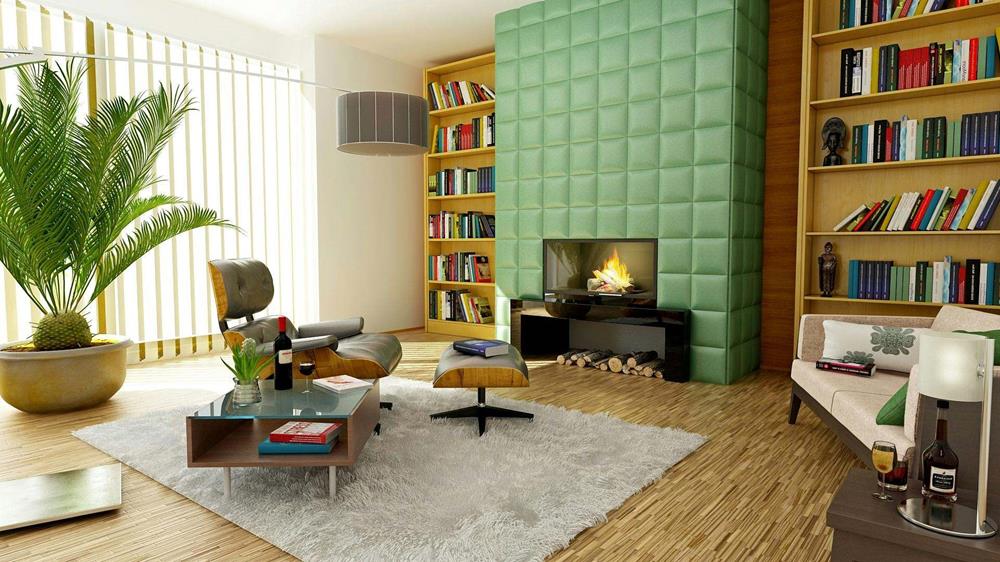Interior design is a burgeoning profession these days, but its history is actually not that long. In fact, this particular profession is just over a century old, though it started out in the form of decorating. This art has evolved and become what we know as the specialized field of interior design.
Today, it takes several years of studies, projects, and experience to become a successful interior designer. If you want to become an interior designer in the high-end areas of New York, you’d have to put in even more effort than usual.
If we want to really understand the history of interior design, we might have to delve back a few centuries and look at how things developed from there. Let’s start by looking at how the terms “interior designer,” “interior decorator,” and the like were used in the United States and work our way back to the roots of this profession:
First Usage of the Terms
It was in the early 1900s that Americans first started using ‘interior decorator’ to describe the profession. At that time, interior decorators had no actual academic credentials – they were only successful due to their good taste, talent, and common sense.
Elsie de Wolfe was the first known interior decorator to get a commission for interior design. She published the first ever interior design book in 1913, entitled The House in Good Taste. However, the first documented commercial interior decorator was Dorothy Draper. Draper established her own design firm, Architectural Clearing House, in 1923. Draper went on to become the most influential tastemaker in America in 1960.
The magazine Interior Design and Decoration first used the term “interior design” in the 1930s. One of its competitors also used just “interior designer” instead of “decorator.” At this point, design schools were beginning to recognize the role of designers, engineers, and architects when it came to interior design.
Professional Organizations
In 1931, the largest professional organization for interior design was formed. This was the American Institute of Design or AID. In 1936, this organization became the American Institute of Interior Designers. In the following years, several more professional organizations and associations represented this growing field.
In the 1970s, the National Council for Interior Design Qualification (NCIDQ) and the Foundation for Interior Design Educational Research (FIDER) were established to maintain and govern the standards for interior design professionals. They also deal with the examination and education of these individuals. However, it was only in 1982 that Alabama passed legislation supporting the interior design profession.
We can see the profession of interior design evolving more rapidly. The demand for interior design is also becoming more focused and specialized, so designers have to stay updated on what the market needs. There are now several interior design specialties, including home design, healthcare design, universal design, educational and institutional design, specialty workplace design, and more.
The History of Interior Design
Interior design, a combination of art and science, is dedicated to enhancing the form and function of interior spaces. Its primary aim is to create an environment that is not only aesthetically pleasing but also polished and functional. Trained in the arts of research, planning, coordination, and execution, interior designers focus on crafting spaces that align with practical goals. Despite its rich variation today, the essence of the profession revolves around these fundamental principles.
However, the prominence of interior design as a distinct profession is a relatively recent development. Historically, interior design was closely linked with architecture, primarily focusing on the practical arrangement of spaces within a building’s architectural framework. This changed significantly with the rise of the middle class during the Industrial Revolution. As architecture became more complex, the demand for specialized interior design grew. Designers began to focus on optimizing spaces not just for functionality but also for the well-being and comfort of the users.
Early Civilizations
The history of interior design is deeply rooted in the rich soils of early civilizations, notably Egypt, Greece, Rome, and even ancient India, each of which contributes to defining elements of the field.
Ancient Egyptian design emphasized order, symmetry, and monumental simplicity, often incorporating symbolic ornamentation to reflect religious beliefs and the afterlife. Egyptian “soul houses,” miniature house models found in tombs, offer insights into the interior design of various dynasties, showcasing elements like ventilation systems and architectural features.
The Greeks were celebrated for their pursuit of beauty and harmony, introduced architectural orders, and their use of proportion and scale significantly influenced interior spaces. Meanwhile, the Roman design evolved from these foundations, becoming more opulent and luxurious, introducing innovations like arches and domes and a penchant for elaborate floor mosaics and wall paintings.
Ancient Indian architects, like the mythical Vishwakarma, often undertook interior design as part of their architectural projects. India, with its rich cultural heritage, contributed a different flavor, marked by vibrant colors, intricate carvings, and an emphasis on craftsmanship and symbolism.
These ancient civilizations laid the groundwork for interior design, establishing principles of balance, proportion, and a keen emphasis on functionality, aspects that continue to resonate in modern design practices.
The Dark Ages
During the Dark Ages, spanning roughly from 900 to 1100 AD, the world of interior design experienced a marked decline. This era, overshadowed by wars and societal upheaval in medieval Europe, saw a significant shift from the ornate and decorative styles of earlier periods. Interiors of this time were characterized by their austerity and practicality, mirroring the somber mood of the era.
In most dwellings, interior spaces were stark and unembellished. Stone slab flooring was common, offering durability and ease of maintenance in a period where functionality trumped aesthetics. Walls were typically clad in dark wood paneling, which provided a rudimentary form of insulation and structural support but contributed to the overall somber ambiance of these spaces. Furniture was sparse and utilitarian, designed more for basic needs and less for comfort or beauty.
Even among the wealthier classes, there was a noticeable restraint in color and decoration. While stonework and tapestries might have been used to add some semblance of adornment, the overall approach remained subdued, with a preference for sober and muted colors. This restraint in design reflected the challenging times of the Dark Ages, where resources and efforts were primarily directed toward survival and defense rather than artistic endeavors.
However, the conclusion of the Dark Ages marked a renaissance of sorts in interior design. With the Gothic era beginning in the 12th century, there was a return to decorative arts. The Gothic style reintroduced color and ornamentation into European homes, emphasizing natural light and popularizing open, brighter interiors.
In terms of materials and construction, medieval interior design relied heavily on local resources. Stone was a fundamental aspect of medieval architecture, used extensively for both structural and decorative purposes. In regions abundant with timber, wood played a crucial role. Oak, known for its strength and durability, was commonly used for furniture and architectural details, often featuring intricate carvings and motifs.
Fabrics, too, were an essential component of medieval interiors. Tapestries, imported textiles, and materials like wool, silk, and velvet were used to add richness and texture. These textiles often adorned walls and windows, serving not only as decoration but also as insulation in large, drafty stone buildings.
Renaissance and Baroque Elegance
The Renaissance, a revival of classical styles, began in Italy and was influenced heavily by Greek and Roman antiquities. It marked a departure from the medieval Gothic style, bringing a new emphasis on symmetry, order, and the use of natural light. This period saw architects skillfully handling space, with decoration playing a significant part in enriching the spatial effects. Classic architectural forms found their way into plasterwork, inlaid woodwork, and painted decoration.
In terms of interior design, the Renaissance style showcased ornate details and carved elements, often inspired by religious or mythological themes. Furniture was substantial, made primarily from walnut or oak, and featured luxurious fabrics like velvet and silk in deep, rich colors.
The color palette was inspired by nature, with shades of blues, greens, and browns, accented with golden oranges, purples, and yellows. Symmetry was central to the layout of living spaces, creating balanced and harmonious environments. Ceilings were often high and ornately decorated, adding a sense of grandeur, while the walls were adorned with classic paintings and sculptures.
Transitioning to the Baroque period, interior design became even more opulent. This era introduced an increased use of color and light to create dramatic, dynamic interiors. The Baroque style was characterized by its ornate detailing, luxurious materials, and an overall sense of motion and fluidity. This period was known for its bold use of contrasting light and dark, intricate frescoes, and grand, sweeping spaces designed to awe and inspire. Furniture continued to be substantial but with more curves, gilding, and intricate details.
Both periods left an enduring mark on interior design, combining opulence with elegance, sophistication with comfort, and setting the stage for future design innovations.
Industrial Revolution and Design Transformation
The Industrial Revolution, spanning the 18th and 19th centuries, brought a paradigm shift in interior design, profoundly influenced by technological advancements and changes in societal structures. The shift from manual labor to mechanized production led to an increase in available materials and new production techniques, revolutionizing furniture design and manufacturing. This era saw the birth of mass-produced furniture, making modern furnishings with simpler lines and minimal ornamentation accessible to a broader audience.
The rise of industrialization led to increased urban living, significantly impacting home design. Homes became smaller and more efficient, with furniture designed to maximize limited space. The introduction of electric lighting fixtures opened new possibilities in interior design, allowing for mood creation through adjustable lighting intensity and direction.
Industrial design, initially confined to factories and industrial settings, gradually transitioned into residential spaces. As people began appreciating the unpolished, raw aesthetics of industrial elements, these once purely functional spaces transformed into stylish urban dwellings. Loft apartments emerged, retaining the charm of their industrial past with open floor plans, high ceilings, large windows, and exposed structural elements like brick walls and steel beams.
Key elements of industrial interior design include a neutral color palette, with shades of gray, black, white, and earth tones creating a versatile backdrop. Utilitarian furniture, typically made from metal, reclaimed wood, and leather, focuses on functionality and simplicity. Industrial lighting fixtures like pendant lights with metal shades and exposed bulbs are dominant, providing both illumination and aesthetic appeal.
Vintage decor and minimalist approaches are also integral to industrial design. Vintage machinery and salvaged items add character, while a minimalist approach ensures a sense of calm and clarity in the space. The style celebrates the intrinsic beauty of materials and design, creating environments that are comfortable, rugged, and authentic.
The Industrial Revolution forever altered the course of interior design by changing the materials used in furniture-making and lighting fixtures, influencing the layout of homes, and setting off an era where electric lighting was integral to room aesthetics.
Modernism
Modernism in the 20th century was a significant turning point in interior design, shaped by a convergence of various factors, including social changes, technological advancements, and a new philosophical outlook.
Originating as a reaction against the ornate styles of the 19th century, Modernism embraced minimalism and was driven by the idea that design should be dictated by function rather than form. Modernism was not just an architectural and design style – it represented a broad range of movements in art, design, and literature that largely rejected previous styles. It flourished in various parts of the world, reshaping the cultural and artistic landscape.
The groundwork for Modernist principles was laid in publications like “House Beautiful,” which emerged in Chicago in 1896, advocating against excess and vulgar display in design. This sentiment was echoed in Europe by architects and designers who founded the Bauhaus in 1919, with figures like Walter Gropius and Paul Klee at the helm. They sought to merge art with craft and address the dehumanizing effects of the machine age.
Modernism came to the fore between World War I and World War II as part of a broader move to adapt industrial techniques to societal needs. This period saw an emphasis on functionality, rejecting past ornamental motifs and advocating for the scientific study of human behavior in relation to physical design. The movement was also paralleled by growing interest in abstract art.
Key features of Modernist architecture and design include an emphasis on volume, asymmetrical compositions, minimal ornamentation, and the use of new materials like reinforced concrete, steel, and glass. The International Style emerged from the Bauhaus movement, characterized by boxlike forms, hard surfaces, and a lack of color and ornament, sometimes criticized for its lack of human warmth. Le Corbusier, a prominent figure in the movement, famously described a house as “a machine for living,” indicative of the functionalist ethos of the time.
Contemporary Interior Design
Contemporary interior design is a melting pot of historical styles and modern trends, creating spaces that are both visually stunning and deeply rooted in design history. One of the key trends defining interior design in 2024 is the eclectic fusion of styles. This trend sees a resurgence of rustic textures and sepia tones meeting the clean lines of modern minimalism.
Design now emphasizes material honesty and functional beauty, moving away from purely superficial aesthetics. This shift includes a blend of bold geometric forms with the understated elegance of traditional materials, offering a harmonious mix of classic and contemporary elements.
Historical design styles continue to influence contemporary interior design. For instance, the opulence of the Baroque period and the clean lines and functional design of Modernism inspire many contemporary spaces. The challenge lies in incorporating these historical elements in a way that avoids pastiche by selecting pieces or influences that resonate with contemporary lifestyles while maintaining authenticity. This might include using antique pieces as focal points in a modern setting or adopting color palettes from a particular era in a new, fresh way.
The 2000s marked a significant change in interior design, where the industrial style rose to popularity. This era was characterized by blending the old with the contemporary, creating a minimalistic and elegant style. By the 2010s, Scandinavian minimalism and rustic designs became predominant, focusing on simplicity and natural color schemes. Interior design continued to evolve with the rise of smart homes and the increased use of technology in the living space.
In Belgian Modernism, there’s a strong emphasis on the balance between aesthetics and practicality. This style incorporates minimalist lines and neutral palettes while ensuring every component serves a functional purpose. Natural elements like raw wood, linen, and exposed beams play a significant role, contributing to the calm and earthy feel of Belgian interiors.
The furniture in Belgian Modernism is characterized by its use of natural materials, clean lines, and a balance between form and function. This style also involves choosing pieces for their functionality, aesthetics, and quality, ensuring that they serve a purpose and align with the style’s minimalistic and natural look.
Interior Design Timeline
Interior design’s journey through history is a fascinating tale of evolving styles, each reflective of its time and cultural context. Here’s a rephrased and enriched overview:
Stone Age (6000 – 2000 BC): The earliest hints of interior design were found in prehistoric dwellings. Practical yet decorated, these early homes featured drawings of nature and life, showcasing an instinct for aesthetics. Primitive huts were constructed from materials like mud, animal skins, and sticks.
Egyptian Era (2700 – 30 BC): While ordinary Egyptians lived in mud huts, royalty resided in grand buildings richly adorned with murals depicting their history and beliefs. The interiors were furnished with basic pieces enhanced by vases and sculptures.
Neolithic Europe (2000 – 1700 BC): This period saw the creation of handmade pottery, often embellished with paint for both functional and decorative purposes.
Greek Period (1200 – 31 BC): The advancement of civilization allowed more personalized home decoration. Wealthier Greeks had furniture adorned with silver and ivory. This era also introduced construction rules, including iconic pillars in buildings.
Roman Era (753 BC – 480 AD): A time when even non-royals could display wealth through home decoration. Roman interiors featured bespoke furniture with clawed feet and soft furnishings decorated with murals and mosaics.
Byzantine Period (500 – 1500 AD): Grand domes and lavish decorations characterized this era, emphasizing opulence in design.
Dark Ages (900 – 1100 AD): A decline in interior design sophistication led to minimalist interiors with basic wood paneling, minimal furniture, and stone slab floors.
Gothic Era (1140 – 1400 AD): After the minimalism of the Dark Ages, this period reintroduced ornamental decor and colors into homes, emphasizing vertical designs, open floor plans, and ample windows for light.
Renaissance (1400 – 1600 AD): A focus on aesthetic beauty dominated this era. Luxurious furnishings, vibrant colors, and expensive fabrics like velvet were used alongside marble floors.
Baroque Period (1590 – 1725 AD): This era embraced flamboyance and artistic excess, with interiors featuring stained glass, twisted columns, colorful marble, mirrors, chandeliers, and painted ceilings.
Rococo Style (1700 AD): Noted for its elegance, this style utilized flower motifs and diverse materials like tortoise shells and pearls on furniture, including Asian porcelain in decor.
Traditional Style (1700 AD – Now): Spanning from 1700 to 1800 and still popular today, this style is formal in feel, historically favored by certain social classes.
Industrial Revolution (1760 – 1820 AD): This period made interior design more accessible to the masses, with luxury items becoming affordable and printed media featuring fashion and design emerging.
Neoclassical Style (1780 – 1880 AD): Inspired by ancient Greece and Rome, this style is reflected in the architecture and furniture of the time, heavily using metals and luxurious fabrics.
Tropical Style (1800s – Now): Influenced by British colonies like India and the West Indies, this style blended traditional European design with exotic tropical elements.
Aesthetic Movement (the 1800s): This movement emphasized that decoration should have purpose before beauty, epitomized by the slogan ‘Art for arts sake’.
Victorian Era (1837 – 1901 AD): Characterized by a focus on ornaments and a strict color code based on room types, using contrasting colors from the color wheel.
Tuscan Style (1840s – Now): Drawing inspiration from the serene and natural ambiance of Tuscany, this style is a blend of simplicity, elegance, and luxury.
Arts & Crafts Movement (1860 – 1910 AD): Emerging as a reaction to industrialism, this movement focused on traditional crafts for furniture and decor.
Rustic Style (1870s – Now): Featuring handcrafted furniture and large open spaces, this style often includes wooden beams and columns for an open, airy feel.
Art Nouveau (1890 – 1910 AD): Known for blending interior designs with natural exterior elements, using curved lines and designs inspired by plant life and flowers.
Asian Style (1900s – Now): Recognized for its minimalist appearance, utilizing natural materials and functional furniture like mats, futons, and screens.
Eclectic Style (1900s – Now): This style led to the rise of the interior design trade, catering to a need for understanding diverse styles and interior design history.
Colonial Revival (1905 – Now): Popular in the USA, this style draws inspiration from historical styles like Neoclassical and Georgian, gaining momentum with the automobile’s advent, which facilitated visits to historical sites.
Modern (1918 – 1950): Characterized by under-furnished spaces, bold primary colors, and the use of materials like plastic and steel. The design flowed seamlessly from room to room.
Country Style (1920s – 1970s): Inspired by farmhouses, this style is practical with quality, somewhat vintage furnishings.
Mediterranean Style (1920s – Now): Textures like plastered walls and terracotta are used to evoke coastal European vibes, complemented by wrought iron, patterned tiles, and aqua colors.
Art Deco (1920s – 1960s): Known for modernity, elegance, and glamour, Art Deco features clean lines, angular shapes, stylized patterns, and lavish ornaments.
Mid-Century Modern (1930s): Focused on bringing the outdoors in with large windows and open-plan rooms. The style was relatively simple.
Transitional (1950s – Now): A blend of classic and modern, aiming to be timeless by mixing old and new elements. This style is less minimal than contemporary but focused on simplicity.
Contemporary (1980s – Now): Characterized by neutral colors and basic materials like wood and stainless steel, with minimal ornamentation and occasional bright color contrasts.
Conclusion
The evolution of interior design mirrors the changes in society, technology, and artistic expression over centuries, each style leaving an indelible mark on the way we perceive and create our living spaces.

